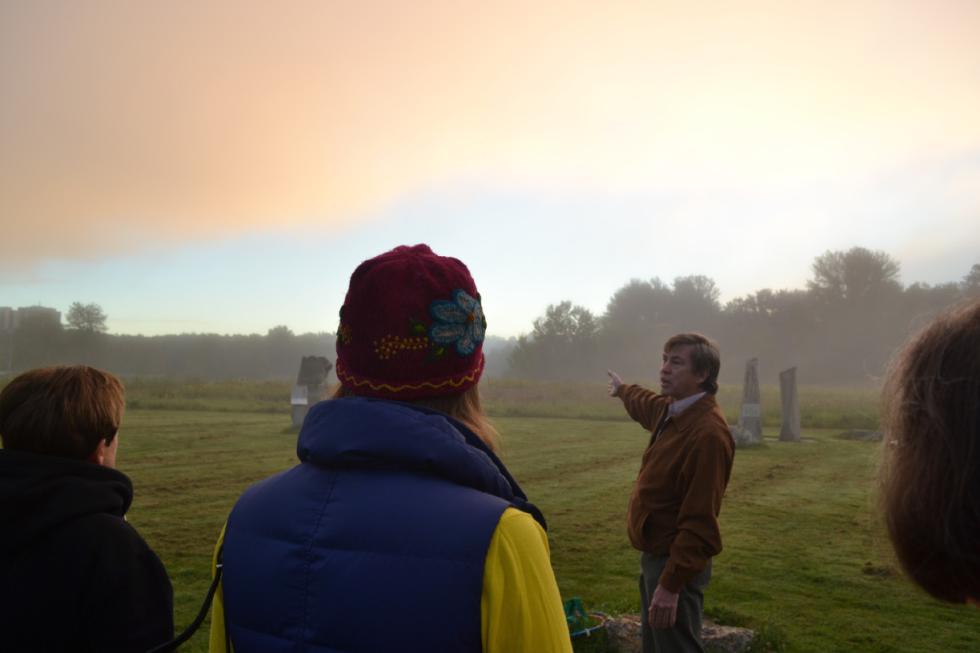At the end of a long day, there is no separating me from the world. Everyday needs loom large in my mind, and I’m roped, like Gulliver, to a thousand little worries.
But at six a.m., when I step onto my front porch, I feel small again. Looking up at a cold, dark sky, full of shining stars, I fall like a speck back into the void. Maybe, if we could see the stars at every hour of the day, we would take a deep breath more often and remember our place.
UMass astronomer Stephen Schneider sees the stars all day long — at least in his mind’s eye. That’s why I’m driving over to Amherst to catch the sunrise with him. This morning, Sep. 23, marks the autumnal equinox, and I want to be somewhere special for this astronomical changing of the seasons.
Before dawn, the impending fall chill is even more pronounced, and I wear a coat in the car. I drive along Rocky Hill Road in Hadley. The sky begins to glow dark blue. A thick fog blankets the fields in semi-darkness.
When I arrive on the edge of a dewy green meadow at UMass, just south of McGuirk Stadium, I see the rocky spikes of the Sunwheel looming out of the ground in a large circle, shrouded in mist like something out of Arthurian legend.
Half a dozen people are gathered to hear Schneider describe what on earth — and beyond earth — makes this day unique.
Schneider stands at the center point of the Sunwheel, his hands in his coat pockets and an avuncular smile on his face. He speaks eagerly, shifting his weight from time to time, and his shoes squelch in the wet freshly-mown grass.
“If you come out here often, you’ll see that the sun rises in different positions,” he says. “Ancient peoples figured out that, based on where the sun rises each day, you can determine where you are in the course of the year.”
Schneider points to the large stone along the Sunwheel that marks the autumnal equinox. The sun will rise over this stone this morning, heralding the beginning of fall in the northern hemisphere. Then he points to the stone marking the vernal equinox. Starting today, as the sun crosses the celestial equator, our sunrise will make its way toward this second stone, arriving on March 20, 2016. Then: back again.
As he talks, the fog starts to burn off. The stadium becomes visible to the north, and a warm rosy light climbs over the trees to the east. The world is still quiet, save for the occasional passing car heard through the trees on University Drive.
The group disbands at 7:30 a.m., and I head to work, to change into dry socks and dive back into my everyday. A few hours later, though, with tasks looming, I turn away from my computer and look up, in search of a temporary smallness. Through the ceiling I imagine the stars, and I look for comfort in the cold, careening path on which our year-long orbit takes us.
— Hunter Styles, hstyles@valleyadvocate.com



